Beware the children!
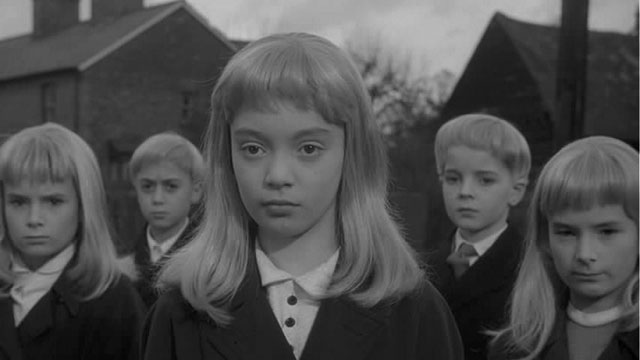
In the past year or so I’ve seen five “evil kids” horror movies. Jaume Collet-Serra’s Orphan (2009) uses the classic “cuckoo” storyline: a couple with one young child decide to adopt a needy orphan, in this case a strangely moody girl. It’s not long before she begins to torment the couple’s biological child, not to mention the other kids at school who find her strange. What’s not so familiar is the disturbingly precocious sexuality of the girl as she begins to seduce the father, trying to wedge her way between him and the mother. This gives the movie an edge which is made all the creepier by the remarkable performance of 12-year-old Isabelle Fuhrman as the girl. While a late revelation about her origins unfortunately undermines everything which has gone before, Orphan remains a fine example of its genre.
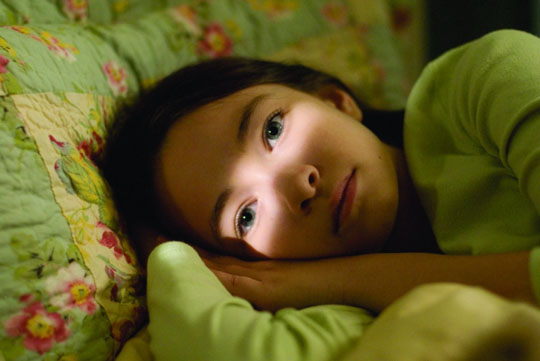
Taking a different tack, Christian Alvart’s Case 39 (2009) goes the supernatural route, with the seemingly abused, frightened Lilith (Jodelle Ferland, previously excellent in Terry Gilliam’s underrated Tideland, 2005) turning out to be a demon who insinuates her way into families which she proceeds to destroy. By gradually revealing her true nature to her caregivers, while maintaining an outward appearance of child-like vulnerability, she manages to make those caregivers look like child-abusing scum as they are driven to try to kill her. Not very well received critically, Case 39 is nonetheless a tense, atmospheric little horror movie.
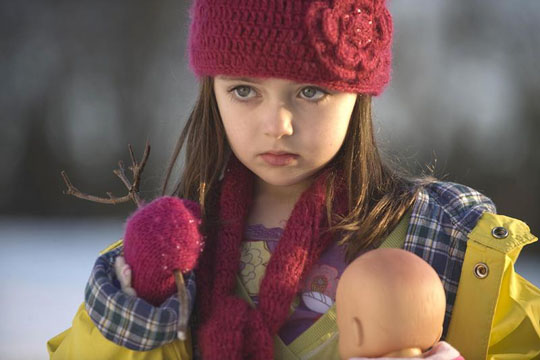
In Tom Shankland’s chilling The Children (2008), two middle class families settle in for a Christmas gathering at a country house only to find their kids gradually infected with what may or may not be a virus; “accidents” begin to happen, people get hurt … and it slowly becomes apparent that the kids are waging war on the adults. But even then the parents can’t really bring themselves to fight back, remaining completely vulnerable as the kids become openly homicidal.
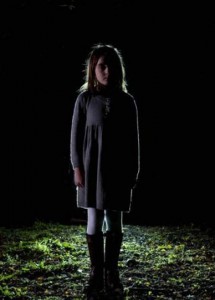
Somewhat different is the Irish film Wake Wood (David Keating, 2011), a kind of dark folk tale with elements of W.W. Jacobs’ classic short story The Monkey’s Paw, not to mention Stephen King’s variation on that theme, Pet Sematary (1983, filmed in 1989). In this version, a young couple, grieving the death of their daughter, move to a small town where they discover that the locals have a peculiar tradition of bringing back the dead for a short period of time so that the living get a chance to say a proper goodbye. Although the villagers are reluctant to provide this service for outsiders, the ceremony eventually takes place. But because the couple violate the very strict rules, what comes back turns out not to be their sweet little girl, but something far more dangerous which they nonetheless try to protect from the increasingly concerned villagers. In a way, Wake Wood makes a nice companion piece for Robin Hardy’s classic The Wicker Man (1973) with its quietly building tension arising from the survival of pagan rites in a world which may not be as modern as we believe.
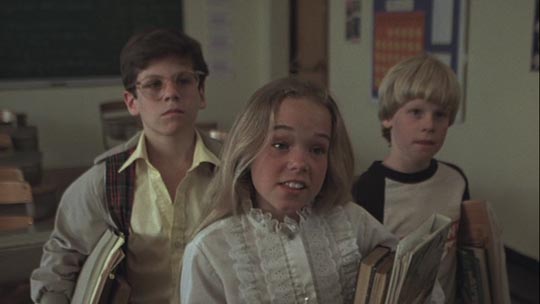
Most recently, I finally caught up with Ed Hunt’s Bloody Birthday (1980). This one was a bit of a surprise because I’d previously only known Hunt as the auteur behind 1977’s ludicrous sci-fi cheapie Starship Invasions. Apparently he started out making Canadian softcore porn in the ’70s before moving on to sci-fi and horror, including a couple more after Birthday – but even without seeing any of the others, I feel safe in assuming that this story of three kids born during a total eclipse, which causes not just a complete absence of conscience but also a vigorous compulsion to commit gruesome murders, is his masterpiece. It’s surprisingly well-done, with the three kids chillingly convincing as they play their deadly “games” for nothing more than their own amusement.
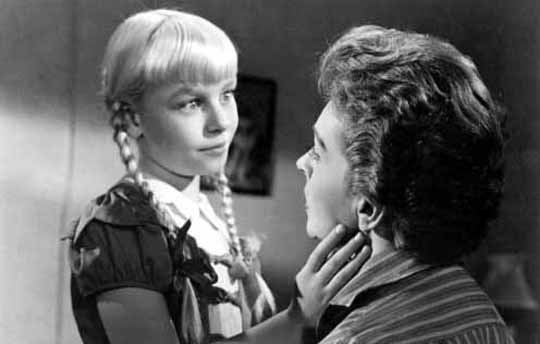
This sub-genre, while not exactly prolific, has shown remarkable persistence. Although it may have been around longer, the first prominent example I can think of is Mervyn Leroy’s adaptation of William March’s The Bad Seed (1956), in which young Patty McCormack plays a precocious, homicidal little girl. Studio and Hays Code discomfort with such a concept is clearly revealed in the awkward conclusion of the film, which tries to combine divine retribution with a wink to the audience that it’s really just been a bit of a lark, not to be taken seriously.
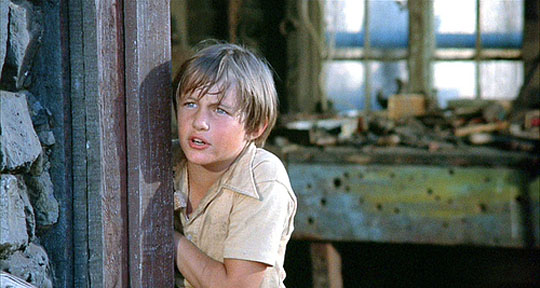
But the idea of the “evil child” wasn’t to be so easily contained and particularly since the ’70s it has cropped up quite regularly on movie screens. Robert Mulligan’s film of Tom Tryon’s The Other (1972) is a more subtle and effective version of this story of a family infiltrated by a murderous “bad seed”. William Friedkin’s The Exorcist (1973), which strenuously tries to persuade us that middle-class adolescent acting out is actually the work of the devil, gave the genre some big budget, studio-backed credibility. But more often than not these threatening youngsters showed up in lower budgeted, less reputable films. Probably my most distinct memory of the old Siskel & Ebert At the Movies TV show was their “dog of the week” segment sometime back in 1980 when they expressed outrage about a cheap exploitation movie called The Children, directed by one Max Kalmanowicz (who seems to have only one subsequent directing credit).
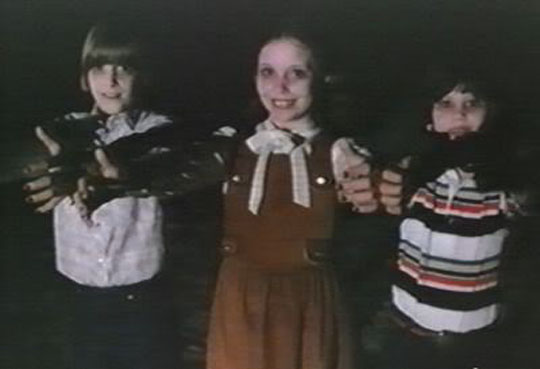
At the time, I had recently seen The Children with a friend and we’d both enjoyed its crude but undeniably creepy charms. A bus full of school kids drives through a toxic cloud escaping from a nearby nuclear plant and they become radioactive zombies whose slightest touch brings death to the parents they reach out to with open arms; naturally, the parents respond to this seeming gesture of affection with attempts to comfort the kids with a big hug … only to find themselves burned to a crisp. Eventually the adults figure out what’s going on and realize that the only way to survive is to kill the kids by cutting off their hands. As I said, pretty crude.
This cheap little exploitation movie sent Siskel & Ebert into a kind of apoplectic fury, not because of any cinematic deficiencies (and there are many, including bad acting and rough camerawork), but because the whole thing was predicated on the idea of children posing a threat and parents being driven to kill their own offspring. That, it seemed, overstepped all bounds of propriety and represented a moral offence which was unforgivable.
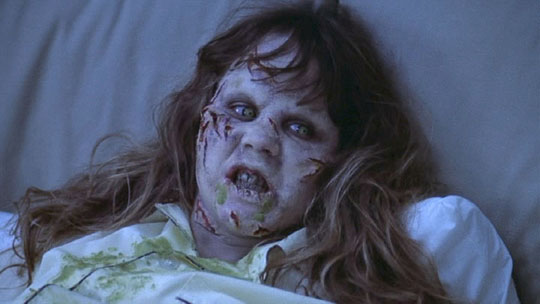
What’s interesting about this is the fact that, by definition, horror is transgressive; it violates norms and polite standards of behaviour … it wouldn’t be scary if it didn’t. What enraged Siskel & Ebert was very specifically the violation of a particular norm, the one which insists that the parent-child bond be one of nurturing love and protectiveness.
This is a fine ideal, but a mere glance at the real world shows that all too often this norm is violated in horrific ways. So, is this the kind of reality which is out of bounds, either for art or exploitation? Tastelessness in itself isn’t enough to condemn a horror movie. Perhaps it’s more useful to ask a) why this particular sub-genre exists and b) why should it elicit such an intense reaction?
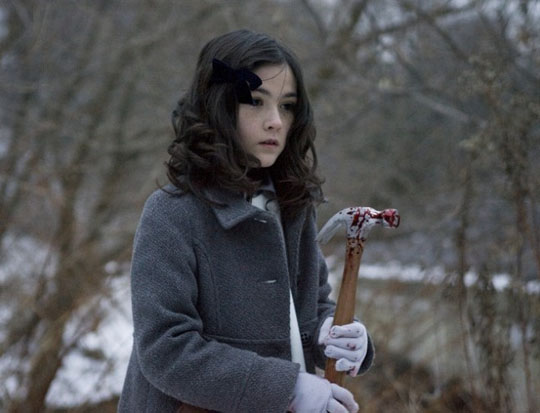
The essence of the evil child story is the idea that supposedly innocent and vulnerable kids are actually monsters bent on destroying their elders. It’s not difficult to see where the seed of this idea comes from. Children are alien intruders into their parents’ lives, disrupting and irrevocably transforming the status quo with their incessant demands for care and attention. They seem voracious in their needs and a parent has no choice but to bend to the child’s demands.
What could be more natural than that some degree of parental resentment might manifest in the idea that these little creatures aren’t really their own offspring, but rather dangerous changelings against which the suffering parent might be justified in taking drastic action? This was most explicitly demonstrated in Wolf Rilla’s film of John Wyndham’s novel The Midwich Cuckoos, 1960’s disturbing Village of the Damned (poorly remade in 1995 by John Carpenter); in this classic story, an alien force impregnates every woman in a small village, producing a clutch of cold-blooded, intellectually superior kids who see the people around them as little more than insects to be used or crushed under foot.
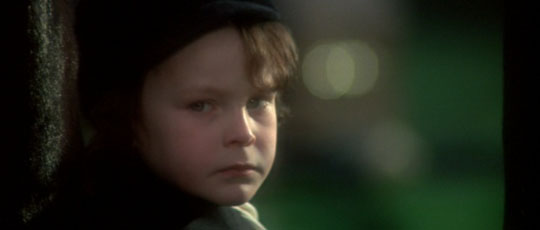
In the blatantly supernatural strain of evil child movies, the kids are literally possessed by demons, or may actually be demons themselves – The Exorcist, The Omen (Richard Donner, 1976), Case 39. In Friedkin’s film, pathological behaviour in an adolescent girl is eventually exposed as possession by an actual demon from hell; in Donner’s and Alvart’s movies the children turn out to be demons incarnate, their disguises as young children protecting them from those who see the truth. In both The Omen and Case 39, as the protagonists realize they must destroy these demons, they appear dangerously unhinged to the other adults around them because the demons are so adept at appearing to be ordinary vulnerable kids.
Related to these demonic kid movies are the nightmare pregnancy tales, perhaps starting with Roman Polanski’s Rosemary’s Baby (1968), and including such lesser fare as Peter Sykes’ To the Devil … A Daughter (1976), Peter Sasdy’s I Don’t Want to Be Born (1975), and numerous others. But these tend more to be about the anxiety of incipient parenthood, rather than anger or fear focused on an autonomous child.
In another strain of the genre, no particular explanation is offered; the kids simply turn on the adults and in a sense declare war; the allegorical underpinnings of these films usually imply that this is some kind of payback for the mess adults have made of the world into which the children, without asking for it, have been born.

One of the best of these is Narciso Ibáñez Serrador’s Who Can Kill a Child? (1976), a Spanish film in which a vacationing English couple arrive on a small island from which all adults have seemingly vanished. It gradually becomes apparent that the children have killed them all and the couple must fight for their lives; but as the title suggests, there is a powerful instinctive imperative that stands in the way of self-defence when the threat is posed by young children. (I wonder whether the Italian director Nanni Moretti ever saw this movie: in the middle section of his three-part Caro Diario [1993], he and a friend visit one of the Aeolian Islands off the north coast of Sicily, where every family has just one child and the little brats completely rule their parents’ lives.)

Stephen King certainly must have seen Who Can Kill a Child? at some point because his short story Children of the Corn (1977) bears a strong resemblance to it. That story, of course, spawned an entire series of movies. (Come to think of it, King must have had a real liking for European horror movies: Pet Sematary shares some distinct conceptual elements with Pupi Avati’s chilling Zeder [1983].)
Tom Shankland’s The Children is an English variation on this theme, which might even serve as a prequel to Ibanez Serrador’s film.
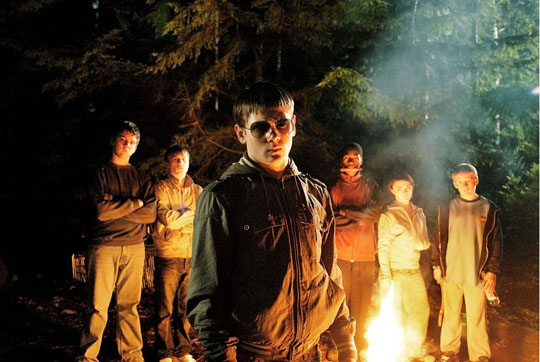
Moving away from horror, there are other films which express a fear of children as something beyond our understanding, portraits of social pathology like Tim Hunter’s chilling River’s Edge (1986) and the British film Eden Lake (James Watkins, 2008), which adds a class element to the formula as a middle class couple off on a camping weekend run afoul of a group of local teens who become increasingly violent.
There has always been an attraction in the horror genre to threats arising from something close and familiar which turns out to be something else entirely … and what could be closer and more familiar than children? There are fears and tensions inherent in parenthood, kept in check by both protective instinct and social taboo … perhaps the sense of discomfort and even moral outrage that sometimes greets such films arises from a recognition of underlying feelings which it is unacceptable to express (just look at the recent reaction to Adam Mansbach’s faux kids’ book Go the F**k to Sleep), but art, literature and popular entertainment have always offered avenues by which to confront such feelings. If this particular genre tends to inspire a deep, uncomfortable sense of disturbance – well, that’s its job.
Comments
A walk in the park compared to a high school class gone wrong….probably a more popular genre?
No doubt why the kids’ teacher in Village of the Damned blows them up at the end!